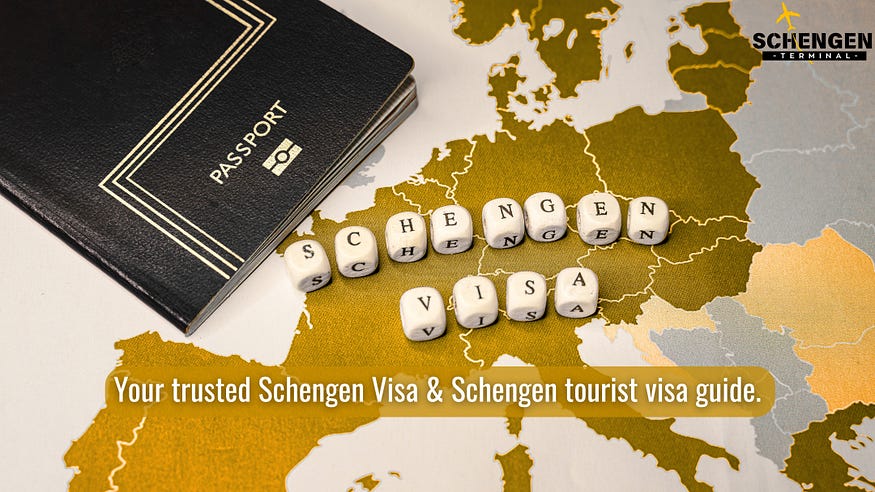Understanding schengen travel insurance requirements for tourists - Schengen Terminal

Planning a trip to Europe’s Schengen region is exciting, but many travellers still get confused about the schengen travel insurance requirements for tourists. The rules look simple on paper, but when you actually begin preparing your documents, things suddenly feel messy, rushed and a bit stressful. That’s exactly why platforms like Schengen Terminal help simplify things — making the entire visa journey far less confusing.
In this detailed guide (with a few honest mistakes and extra spaces like a real human might leave behind), you’ll find everything you need to know before applying for your next dream trip.
Why Schengen Insurance Matters for Tourists
Travel insurance isn’t just another requirement added by embassies for fun. It’s actually a legal necessity for your schengen visa application.
Most tourists don’t realise how important this is until they face a medical emergency in a foreign country where healthcare is expensive. Schengen authorities require every traveller to have coverage of atleast €30,000 — and this must be valid across all 29 Schengen countries.
Many travellers contact Schengen Terminal when they are confused about which insurance plan is accepted. With proper guidance, you avoid last-minute rejections.
Choosing the Right Coverage (Don’t Get it Wrong!)
Not all insurance policies are accepted, and this is where people often mess things up. You need a plan that:
- Covers atleast €30,000 medical expenses
- Includes emergency medical evacuation
- Is valid across all Schengen nations
- Covers your complete travel duration
- Is issued by a reputable insurer
A good Schengen visa consultant can help you understand these details so you don’t end up selecting the wrong policy. Many first-time travellers struggle because insurers use different terms, and the wording can get confusing.
Understanding the Schengen Visa Process
Your travel insurance goes hand-in-hand with other requirements. Whether you’re applying through the embassy, VFS centres, or consulate, you must attach a valid insurance certificate.
Sometimes people think insurance is optional for a Schengen Short-Stay Visa — but that’s a myth. Short-stay visas (Type C) require complete documentation, including insurance, flight bookings, accommodation proof and more.
When travellers reach out to Schengen Terminal, they usually need clarity on which documents must be shown first, or whether a provisional booking is acceptable. Having a proper guide prevents unnecessary delays.
Where Many Applicants Make Mistakes
Many visa rejections happen because of small errors like:
- Wrong insurance dates
- Missing coverage for all Schengen countries
- A policy that isn’t signed or stamped
- Submitting a quote instead of the actual certificate
- Not matching insurance dates with itinerary
This is why having access to a reliable Schengen visa Guide is super helpful. Even experienced travellers sometimes overlook minor details.
Do You Really Need a Consultant?
While it’s possible to apply on your own, thousands prefer taking assistance from a trusted Visa Schengen consultant, especially when travelling for the first time or applying with family.
A consultant helps you avoid mistakes, ensures documents are accurate, and gives clarity on embassy expectations. Many travellers rely on Schengen Terminal for transparent, clear steps that reduce confusion.
Additional Requirements for Tourists
Besides insurance, you’ll also need:
- A valid passport
- Completed visa form
- Photos (as per Schengen specification)
- Confirmed or tentative travel itinerary
- Hotel booking or accommodation proof
- Bank statements and financial documents
- Employment/Business papers
- Cover letter explaining purpose of travel
A good Schengen visa consultant or guide ensures each paper is in proper order. Small things like spelling mistakes, incorrect dates, or mismatched documents can slow down your application.
How Insurance Fits into the Bigger Visa Picture
Even though insurance sounds like just one formality, it is cross-checked carefully. If the insurance is invalid, unclear or wrongly dated, the embassy simply rejects the file. And yes… this happens more often than people think.
By following a detailed Schengen visa Guide, travellers can match travel dates, ensure the correct duration, and confirm that the insurance meets official standards — avoiding unnecessary reapplication costs.
Conclusion
Understanding the schengen travel insurance requirements for tourists is one of the most important steps in your visa journey. With reliable guidance from Schengen Terminal, you can avoid the small but critical mistakes that many travellers make.
Take time to select the correct policy, ensure it covers all countries, and double-check your dates. Once this is sorted, the rest of your documentation process becomes much easier. And if you ever feel confused, you can always reach out for expert help.
WhatsApp us: +919253564921
- Questions and Answers
- Opinion
- Motivational and Inspiring Story
- Technology
- Live and Let live
- Focus
- Geopolitics
- Military-Arms/Equipment
- Sicherheit
- Economy
- Beasts of Nations
- Machine Tools-The “Mother Industry”
- Art
- Causes
- Crafts
- Dance
- Drinks
- Film/Movie
- Fitness
- Food
- Spiele
- Gardening
- Health
- Startseite
- Literature
- Music
- Networking
- Andere
- Party
- Religion
- Shopping
- Sports
- Theater
- Health and Wellness
- News
- Culture

